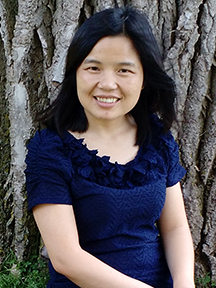By Lin Ou, Derek Piotrowski, University of Michigan-Flint

Health equity, equality and disparities have been a hot and special topic in the health care field in the United States for decades. We are studying health disparities in the United States in my public health graduate program classes. I have learned that the well intentioned systems that are currently in place to encourage equal health care are not beneficial for everyone. Specifically these social programs tend to miss the mark on providing individualized health care.
To understand this phenomenon and the social roots of health disparities, we need to notice the factors which contribute to health disparities in the United States and the rest of the world. The factors and components that influence health differences are race, ethnicity, skin color, religious beliefs, nationality, socioeconomic status (income, education, occupation, wealth, and social class), gender, age, geography, spoken language, disability, illness, political affiliation, social hierarchy, and other characteristics associated with discrimination or marginalization (Braveman, et al., 2011)
Equity is the ability to interpret what is essentially needed to enjoy a complete healthy life and provide these interpreted needs to the people that are experiencing social health disparities. Braveman points out that equity means justice. She also states “health equity is the principle or goal that motivates efforts to eliminate disparities in health between groups of people who are economically or socially worse-off and their better-off counterparts-such as different racial/ethnic or socioeconomic groups or groups defined by disability status, sexual orientation, or gender identity-by making special efforts to improve the health of those who are economically or socially disadvantaged (Braveman P. , 2014).” Conversely, equality refers to the equal treatment and equal availability of health care among all people within a society without exclusion. The lack of health equity societal implementations and the relentless cycle poverty and discrimination are the two major contributors to the growing disparity in health care access today.
“Life, liberty, and the pursuit of happiness (The Declaration of Independence, 1776)” are the founding principles of the United States. America was established with the belief that all its’ citizens had the right to life. The right to life must include equal access to health care. In today’s society, there are many factors that contribute to inequality in health care situations. Factors that include but not limited to racial mapping (the attempt to group people based on socioeconomic status and race), incompetent education standards and low funding for schools in low income areas, a lack of community education on the importance of health care, and an overall loss of respect for life because of the overwhelming problem with violence in low income neighborhoods. It is clear that we the people and the governments that operate on our behalf have not stayed true the founding principles found in the Declaration of Independence. Because of this social programs need to be created to combat the health care disparities that are present in America today. Along with the new social programs, the best was to bridge the gap between the lower class and the upper class disparities is through proper education that would offer upward mobility allowing the lower class to change their socioeconomic status in the United States class system.
Imagine people at a baseball game with an imposing wood fence in front of them. There are three people trying to watch the game from behind the fence. One person is in a wheelchair another person is too short to see over the fence and the third is just tall enough to see the game. If one was to help these people based on equality, they would simply offer everyone the same support (in this case a large platform) regardless of their individual needs. The equality model seems to have some flaws. The person in the wheelchair would encounter problems getting onto the support, the shorter person would now be able to see, and the taller person would receive support that was not needed. If one was to offer assistants based on an equity principle, the person in the wheelchair would receive assistance moving to a location that is handicap accessible, the shorter person would receive a support to stand on, and the taller person would not receive unneeded support. There are many lessens to take away for this example; most important is the benefit of an equity focused plan in delivering support to the community. This method would concentrate on a person’s individual needs as opposed to blanketing everyone with the same service. This would be beneficial to the individual by providing individualized support while also reducing health care costs by not giving people unneeded support.
 |
Lin Ou – She is a student at the University of Michigan Flint studying to obtain a Maters in Public Health. It is important for her to work to improve peoples’ health and overall quality of live through her future involvement in the health care system. |
 |
Derek Piotrowski – He is studying organizational behavior and human resource management at the University of Michigan Flint. He is passionate about psychology and the promotion of emotional and mental health. His goal is to make a positive difference in the lives of others by improving working conditions in the workplace. |
-
- [dropshadowbox align=”none” effect=”lifted-both” width=”600px” height=”” background_color=”#ffffff” border_width=”1″ border_color=”#dddddd” ]References:
- Braveman, P. (2014, February). What is Health Equity: And How Does a Life-Course Approach Take Us Further Toward It? Maternal and Child Health Journal, 18(2), 366-372. Retrieved from http://link.springer.com/article/10.1007/s10995-013-1226-9/fulltext.html
- Braveman, P. A., Kumanyika, S., Fielding, J., LaVeist, T., Borrell, L. N., Manderscheid, R., & Troutman, A. (2011, December). Health Disparities and Health Equity: The Issue Is Justice. American Journal of Public Health, 101(S1), S149-S155. Retrieved from http://ajph.aphapublications.org/doi/full/10.2105/AJPH.2010.300062
- The Declaration of Independence. (1776). Retrieved from http://www.archives.gov/exhibits/charters/declaration_transcript.html [/dropshadowbox]


















